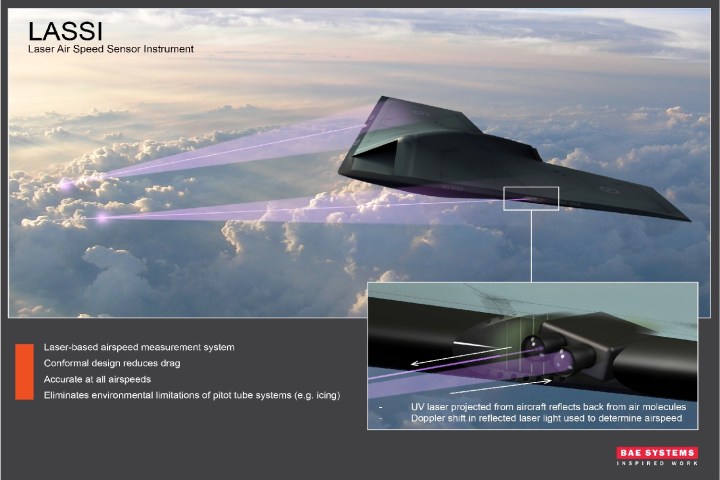
At present, this data is measured using special air-data sensors, such as “pitot tubes,” which stick out from the side of aircraft and sense variations in air pressure. But pitot tubes carry a number of problems, including vulnerability to blockage in icy conditions, and the risk of damage from collisions with birds or when the aircraft is on the ground.
Scientists at BAE Systems may have found a better solution, however, in the form of a highly accurate laser airspeed sensor, dubbed LASSI. This sensor is designed for use in the next generation of high altitude aircraft, and promises to not just increase survivability but also improve fuel efficiency and performance.
LASSI operates on the same principle as roadside speed-guns, by bouncing ultraviolet laser light off air molecules and measuring the change in “color” of the reflections caused by the Doppler Effect.
“In layman’s terms, the farther away from [the ultraviolet light] the reflection is, the faster the aircraft is traveling,” Dr Leslie Laycock, executive scientist at BAE Systems, told Digital Trends. “The ultraviolet light is invisible to the human eye, but tiny changes in its color can be picked up by LASSI, which indicate the speed of the aircraft. The larger the degree of color change in the reflected light, the faster air molecules are moving relative to the craft, and therefore the faster the vehicle is moving. In simpler terms, you could say that the laser is used to bounce light off the surrounding air molecules and the change in the color of the reflected beam is measured to determine the speed.”
Dr Laycock says that BAE has successfully trialled LASSI in a low-speed wind tunnel and on ground vehicles. “The next step is to miniaturize the technology and investigate how it could be integrated into aircraft,” she notes.


